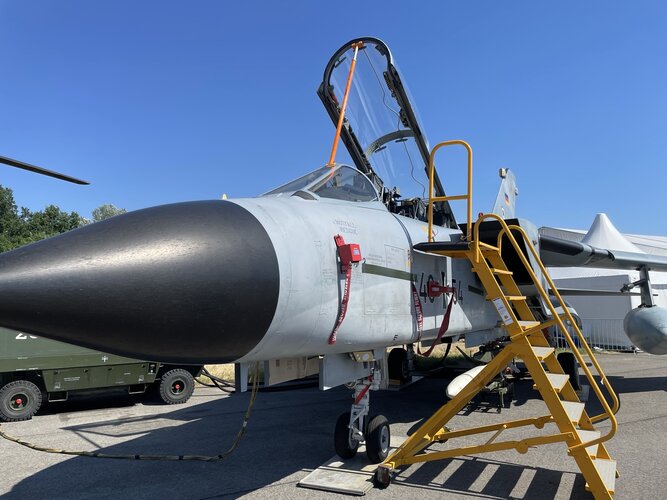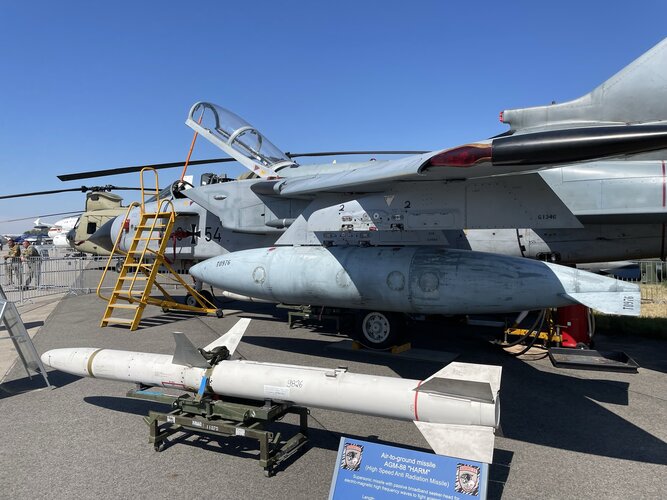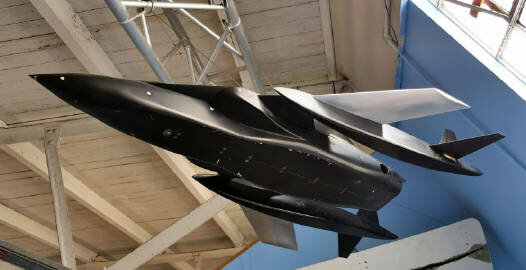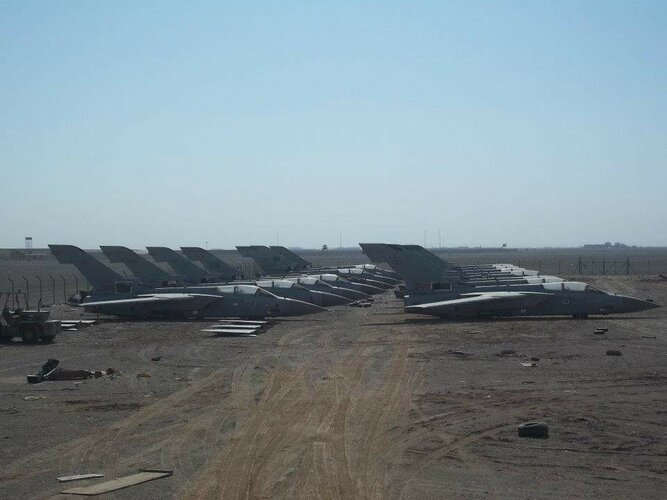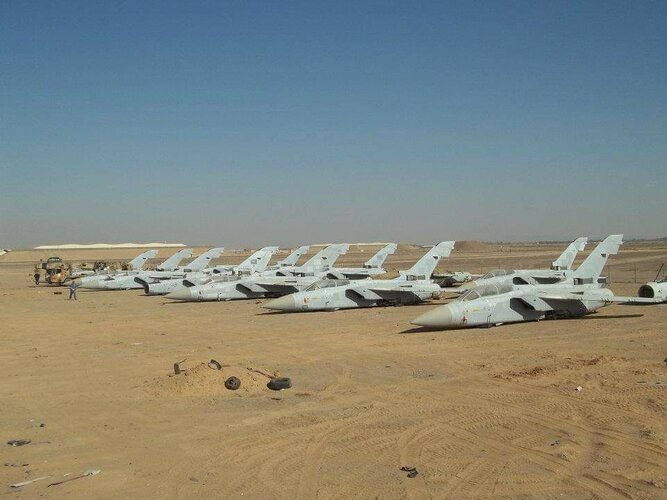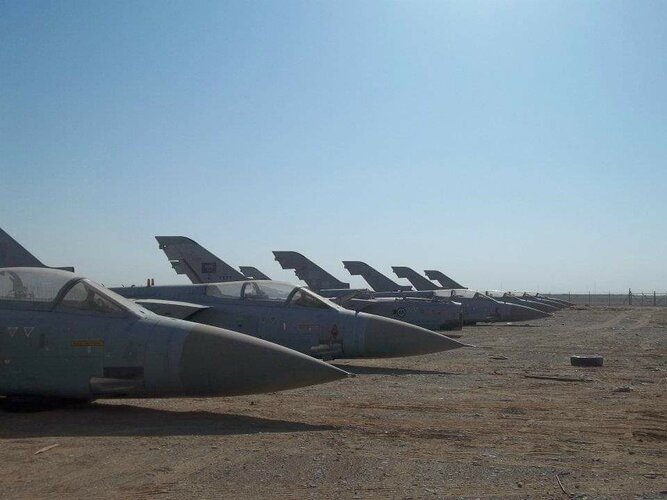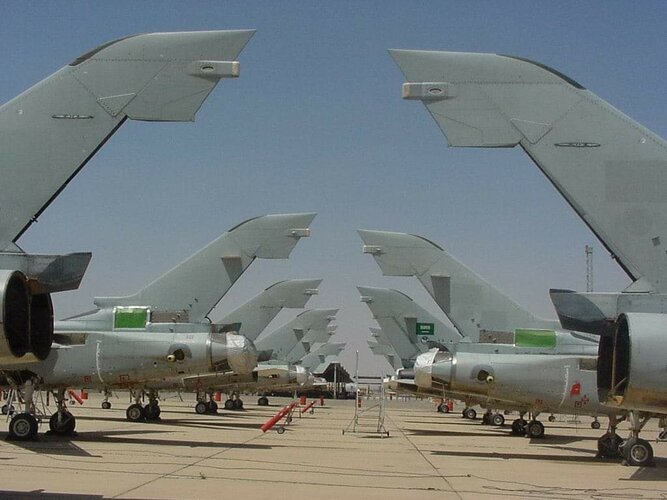You are using an out of date browser. It may not display this or other websites correctly.
You should upgrade or use an alternative browser.
You should upgrade or use an alternative browser.
Panavia Tornado
- Thread starter bob225
- Start date
- Joined
- 27 December 2005
- Messages
- 16,415
- Reaction score
- 18,953
No, this is fine. DIscussions about series built aircraft are exactly the kind of topic that belongs here.
The fin tank was recommissioned for GW1, in normal ops it was not used.Re ADV having a fin tank - so do the strikes, but generally put out of use as it was a pain in the arse (leaks).
Not forgetting that if the tanks were filled in the wrong order it was possible for the jet to tip backwards!
- Joined
- 29 November 2010
- Messages
- 1,698
- Reaction score
- 3,192
on the subject of the Tornado.
I'm surprised Germany chose the Super Hornet and Typhoon as its replacement.
should have went F-35, especially since they wanted something that could drop the gravity bombs
by the way.. could the Tornado have been navalized (both versions)?
I am wondering if they could.. would a navalized Tornado IDS and ADV been a better option for the British carriers than the Harriers.
the IDS flew before the Ark Royal and Hermes (catapult UK carrier) retired
and was about the same weight as the F-4 that the Ark utilized. and also shorter than the F-4 so I think it could fit on the same elevators.
the swing wing would probably make it easier to land on the Ark than the F-4
Ark and Hermes flying Torando IDS and ADV would have probably done more damage to the Argentinians in 82
and perhaps instead of ski-jump follow-ons like the Invincible, the next line of ships would have been CTOL.
I'm surprised Germany chose the Super Hornet and Typhoon as its replacement.
should have went F-35, especially since they wanted something that could drop the gravity bombs
by the way.. could the Tornado have been navalized (both versions)?
I am wondering if they could.. would a navalized Tornado IDS and ADV been a better option for the British carriers than the Harriers.
the IDS flew before the Ark Royal and Hermes (catapult UK carrier) retired
and was about the same weight as the F-4 that the Ark utilized. and also shorter than the F-4 so I think it could fit on the same elevators.
the swing wing would probably make it easier to land on the Ark than the F-4
Ark and Hermes flying Torando IDS and ADV would have probably done more damage to the Argentinians in 82
and perhaps instead of ski-jump follow-ons like the Invincible, the next line of ships would have been CTOL.
flintstone
ACCESS: Restricted
- Joined
- 4 August 2019
- Messages
- 1
- Reaction score
- 3
The F3 would have required extensive modifications to the basic structure of the fuselage to make it able to regularly take an arrestor cable.
During the early days of training RAF aircrew, the pilots were each given practice arrested landings, as they had been with the Phantom it was replacing.
Engineers found they couldn't stop fuel weeping from one of the airframes, as well as being unable to get replacement panels to fit properly. On closer inspection they found the fuselage to be considerably longer than when produced.
Checking the paperwork showed a larger number of practice arrested landings had been carried out on this particular airframe, so the practice of regular arrested landing training was halted and restricted to emergency use only.
The airframe was not up to the stresses of that kind of operation.
During the early days of training RAF aircrew, the pilots were each given practice arrested landings, as they had been with the Phantom it was replacing.
Engineers found they couldn't stop fuel weeping from one of the airframes, as well as being unable to get replacement panels to fit properly. On closer inspection they found the fuselage to be considerably longer than when produced.
Checking the paperwork showed a larger number of practice arrested landings had been carried out on this particular airframe, so the practice of regular arrested landing training was halted and restricted to emergency use only.
The airframe was not up to the stresses of that kind of operation.
- Joined
- 29 November 2010
- Messages
- 1,698
- Reaction score
- 3,192
new video from two weeks ago.
Tornado F.3 pilot talks about his DACT experiences against the F-14, 15, 16
View: https://www.youtube.com/watch?v=hHDoCzoIvp0
a quick summary
F.3 didnt do well WVR
against F-14:
went against them twice
picked the up early on radar due to its size. picked them up BVR and both sides generally equal there
not worried about Phoenix but more about Sparrows
could tell what mode F-14 radar was operating in
during WVR, F-14 circled better. But the F3 pilot was able to get the F-14 to overshoot
against F-15:
worked a lot with.
said always superior to F.3 at all regimes.
generally better in terms of radar, better or same with weapons, but felt the ASRAAM were better than the AIM-9X
the only F3 advantage he felt was the 2 people cockpit (against the F-15C), and they focused on that through confusion by keeping them busy with flying and radar tracking and using gaps in miscoordination to attack to sneak through.
Skyflash not as long ranged as AIM-7M, but not that far behind either. It changed when they got AMRAAMs which gave the Brits a challenge.
F-15s easy to see due to larger size
F-15 pilots attitude "we're coming down in the middle of the street, you can see us, but we dont care, what can you do against us" lol
against F-16:
F-16s started the fight closer. They were not really counter air fighters.
Smaller size and more maneuverable, much better for WVR
F.3, no matter what version or weapons, could not keep up. F-16 would end it quickly, usually in the first circle.
the pilot thought they stood a slightly better chance against the F-18s, but def not the F-16s in wvr.
Tactic was to keep the F-16 at arms length. had to use guile and cunning
Tornado F.3 pilot talks about his DACT experiences against the F-14, 15, 16
a quick summary
F.3 didnt do well WVR
against F-14:
went against them twice
picked the up early on radar due to its size. picked them up BVR and both sides generally equal there
not worried about Phoenix but more about Sparrows
could tell what mode F-14 radar was operating in
during WVR, F-14 circled better. But the F3 pilot was able to get the F-14 to overshoot
against F-15:
worked a lot with.
said always superior to F.3 at all regimes.
generally better in terms of radar, better or same with weapons, but felt the ASRAAM were better than the AIM-9X
the only F3 advantage he felt was the 2 people cockpit (against the F-15C), and they focused on that through confusion by keeping them busy with flying and radar tracking and using gaps in miscoordination to attack to sneak through.
Skyflash not as long ranged as AIM-7M, but not that far behind either. It changed when they got AMRAAMs which gave the Brits a challenge.
F-15s easy to see due to larger size
F-15 pilots attitude "we're coming down in the middle of the street, you can see us, but we dont care, what can you do against us" lol
against F-16:
F-16s started the fight closer. They were not really counter air fighters.
Smaller size and more maneuverable, much better for WVR
F.3, no matter what version or weapons, could not keep up. F-16 would end it quickly, usually in the first circle.
the pilot thought they stood a slightly better chance against the F-18s, but def not the F-16s in wvr.
Tactic was to keep the F-16 at arms length. had to use guile and cunning
F.L.
ACCESS: Top Secret
Ukraine calls on Germany to donate 93-strong Tornado fleet
Ukraine’s Deputy Foreign Minister Andrij Melnyk has made a direct plea to Germany to donate its entire ageing fleet of Panavia Tornado IDS/ECR ground attack/strike jets to help in the war with Russia
Last edited:
Melnyk is in many ways a lose cannon, inlcuding here. As far as I know, this is an opinion spoken as a private person and not an official request.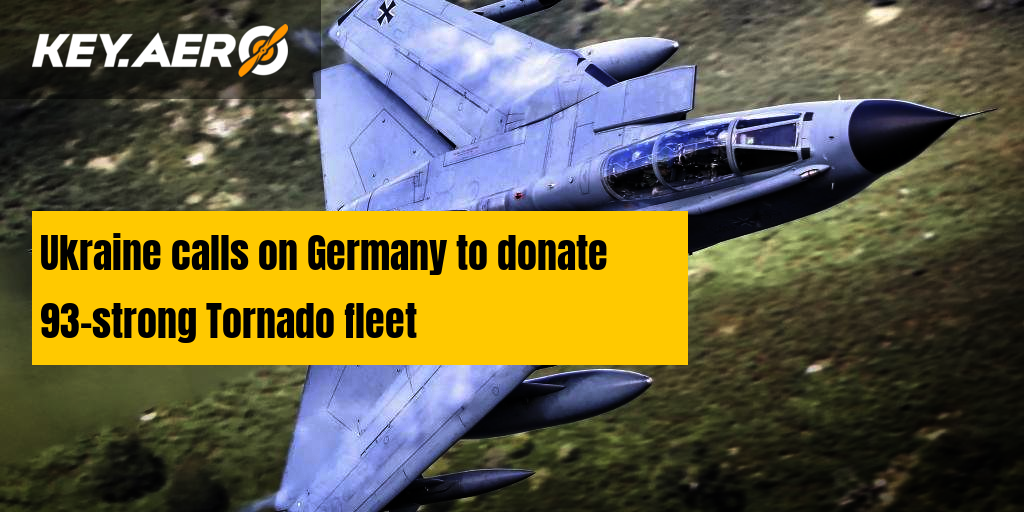
Ukraine calls on Germany to donate 93-strong Tornado fleet
Ukraine’s Deputy Foreign Minister Andrij Melnyk has made a direct plea to Germany to donate its entire ageing fleet of Panavia Tornado IDS/ECR ground attack/strike jets to help in the war with Russiawww.key.aero
I don’t know the official limits, but they flew with 2250 litre tanks inboard, so that’s roughly 2500kg, plus a sidewinder. Outboards only carried ecm or boz pods, so could be 500kg.Does anyone know what the weight limits of the Tornado wing pylons are?
Tonkas are not a great idea, as ukr flies single seaters, so doesn’t have any back seaters. Better bet would be the early U.K. typhoons, or the old Netherlands f16.Melnyk is in many ways a lose cannon, inlcuding here. As far as I know, this is an opinion spoken as a private person and not an official request.
Ukraine calls on Germany to donate 93-strong Tornado fleet
Ukraine’s Deputy Foreign Minister Andrij Melnyk has made a direct plea to Germany to donate its entire ageing fleet of Panavia Tornado IDS/ECR ground attack/strike jets to help in the war with Russiawww.key.aero
Not that I am expecting the Tornadoes to end up there but Ukraine does have Su-24s which have roughly equivalent 'side seaters'.Tonkas are not a great idea, as ukr flies single seaters, so doesn’t have any back seaters. Better bet would be the early U.K. typhoons, or the old Netherlands f16.Melnyk is in many ways a lose cannon, inlcuding here. As far as I know, this is an opinion spoken as a private person and not an official request.
Ukraine calls on Germany to donate 93-strong Tornado fleet
Ukraine’s Deputy Foreign Minister Andrij Melnyk has made a direct plea to Germany to donate its entire ageing fleet of Panavia Tornado IDS/ECR ground attack/strike jets to help in the war with Russiawww.key.aero
timmymagic
Forever disappointed in MoD procurement...
- Joined
- 23 August 2011
- Messages
- 1,026
- Reaction score
- 2,700
Personally I think the best bet is ex USN and USMC F/A-18C. There are 83 x C and 9 x D at AMARC. Unlike F-16 there's no secondary market, need for retention for QF-16 programme or demand for spares. All users are getting rid of them, no market for spares or secondary uses.Tonkas are not a great idea, as ukr flies single seaters, so doesn’t have any back seaters. Better bet would be the early U.K. typhoons, or the old Netherlands f16.
They must be close to single figures of SU-24 now, with way more pilots than aircraft. Tornado would make some sense as a replacement in the short term.Not that I am expecting the Tornadoes to end up there but Ukraine does have Su-24s which have roughly equivalent 'side seaters'.
I think the Tranche 1 Typhoon from all users going to Ukraine in the medium term would be a very sensible outcome. The manufacturers would be happy with it. And its the only capable A2A platform available in numbers to replace the Ukrainian SU-27 fleet for free in the next 15 years. A modest upgrade to the radars giving them the AESA antenna as Leonardo proposed a long while ago would keep them competitive for the next 20 years.Better bet would be the early U.K. typhoons,
Personally I think the best bet is ex USN and USMC F/A-18C. There are 83 x C and 9 x D at AMARC. Unlike F-16 there's no secondary market, need for retention for QF-16 programme or demand for spares. All users are getting rid of them, no market for spares or secondary uses.
Actually there is great demand for spares from Classic Hornets. All the operators are looking for ways to keep their jets flying through to life of Type (LOT). and by way of example there is massive interest in buying the RAAF's stock of spares.
To give you an indication too, here are the currently planned fleet LOTs:
- Canada 2032 LOT with wind down starting FY27/28
- Finland 2030 LOT with wind down starting 2025
- Kuwait 2024 LOT
- Malaysia 2040 LOT
- Spain 2037 LOT
- Switzerland 2030 LOT
- USMC 2030 LOT
RavenOne
ACCESS: Top Secret
- Joined
- 18 June 2008
- Messages
- 856
- Reaction score
- 1,930
They have ordered the F-35on the subject of the Tornado.
I'm surprised Germany chose the Super Hornet and Typhoon as its replacement.
should have went F-35, especially since they wanted something that could drop the gravity bombs
by the way.. could the Tornado have been navalized (both versions)?
I am wondering if they could.. would a navalized Tornado IDS and ADV been a better option for the British carriers than the Harriers.
the IDS flew before the Ark Royal and Hermes (catapult UK carrier) retired
and was about the same weight as the F-4 that the Ark utilized. and also shorter than the F-4 so I think it could fit on the same elevators.
the swing wing would probably make it easier to land on the Ark than the F-4
Ark and Hermes flying Torando IDS and ADV would have probably done more damage to the Argentinians in 82
and perhaps instead of ski-jump follow-ons like the Invincible, the next line of ships would have been CTOL.
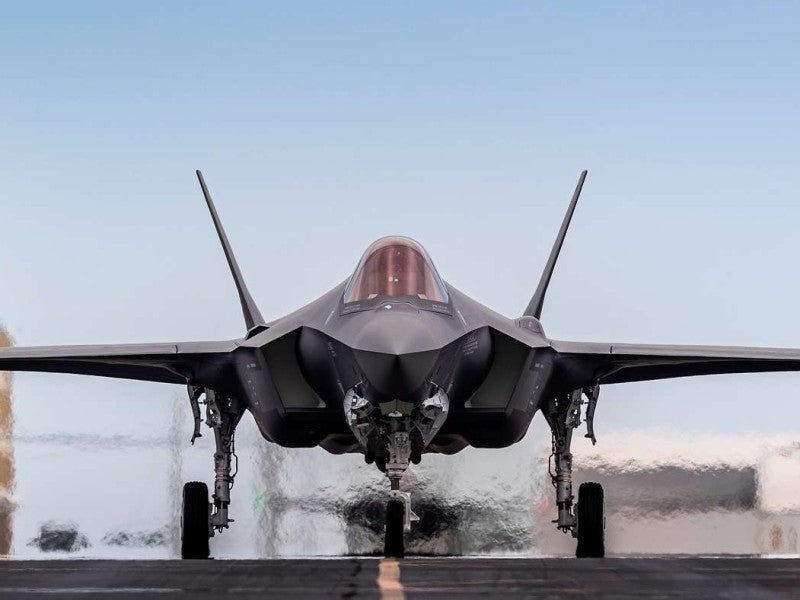
Germany approves $8.83bn to buy 35 F-35 jets from Lockheed Martin
The German Ministry of Defense (MoD) has approved the procurement of 35 F-35 Lightning II aircraft from the US-based aerospace and defence company Lockheed Martin.
cheers
- Joined
- 29 November 2010
- Messages
- 1,698
- Reaction score
- 3,192
that post was from 2020...They have ordered the F-35on the subject of the Tornado.
I'm surprised Germany chose the Super Hornet and Typhoon as its replacement.
should have went F-35, especially since they wanted something that could drop the gravity bombs
by the way.. could the Tornado have been navalized (both versions)?
I am wondering if they could.. would a navalized Tornado IDS and ADV been a better option for the British carriers than the Harriers.
the IDS flew before the Ark Royal and Hermes (catapult UK carrier) retired
and was about the same weight as the F-4 that the Ark utilized. and also shorter than the F-4 so I think it could fit on the same elevators.
the swing wing would probably make it easier to land on the Ark than the F-4
Ark and Hermes flying Torando IDS and ADV would have probably done more damage to the Argentinians in 82
and perhaps instead of ski-jump follow-ons like the Invincible, the next line of ships would have been CTOL.

Germany approves $8.83bn to buy 35 F-35 jets from Lockheed Martin
The German Ministry of Defense (MoD) has approved the procurement of 35 F-35 Lightning II aircraft from the US-based aerospace and defence company Lockheed Martin.www.airforce-technology.com
cheers
siegecrossbow
I really should change my personal text
- Joined
- 12 March 2012
- Messages
- 377
- Reaction score
- 736
- Joined
- 25 July 2007
- Messages
- 3,862
- Reaction score
- 3,135
Nope. Just the to-hand Tornado wind tunnel Model 480 modified to test key features of the BAe P.1216 concept.
See here: https://www.secretprojects.co.uk/threads/tornado-projects.3/page-3#post-612242
So what’s the status of Tornado fleets around the world? Are there any surplus Tornados lying around in storage?
Reading all the speculation about Mirage 2000Ds for Ukraine, I’m wondering why Tornados aren’t being mentioned… are there none available, are they too complex or hard to maintain?
Reading all the speculation about Mirage 2000Ds for Ukraine, I’m wondering why Tornados aren’t being mentioned… are there none available, are they too complex or hard to maintain?
Last edited:
FighterJock
ACCESS: Top Secret
- Joined
- 29 October 2007
- Messages
- 4,186
- Reaction score
- 3,346
Does anyone know what happened to the RAF Tornadoes that were put out of use a few years back to be replaced by the F-35?
Here's a list of where some went:Does anyone know what happened to the RAF Tornadoes that were put out of use a few years back to be replaced by the F-35?
Demobbed - Out of Service British Military Aircraft
There's also a few FOI letter online stating the airframes were basically scrapped if not sent to museum / gategurd etc.
- Joined
- 26 May 2011
- Messages
- 2,105
- Reaction score
- 2,675
A bit of a Tornado sidetrack here. I'm working on Tornado recce stuff at the moment and while attending a strokey-beard meeting, began to ponder what the 'D' in IDS stood for. IDS is always described as 'Interdictor/Strike'. Is the 'D' just to give it a good ring? Or is it some German or Italian title?
Chris
Chris
archipeppe
ACCESS: Top Secret
- Joined
- 18 October 2007
- Messages
- 2,286
- Reaction score
- 2,318
In Italy the IDS was always interpreted like InterDiction & Strike. Anyway in Italian Interdiction exploits the same two letter, since is "Interdizione".A bit of a Tornado sidetrack here. I'm working on Tornado recce stuff at the moment and while attending a strokey-beard meeting, began to ponder what the 'D' in IDS stood for. IDS is always described as 'Interdictor/Strike'. Is the 'D' just to give it a good ring? Or is it some German or Italian title?
Chris
- Joined
- 25 January 2020
- Messages
- 1,053
- Reaction score
- 1,462
I presume that the Italians and Germans need their Tonkas for the nuclear strike role and for SEAD for the foreseeable future. Italy should replace the majority of its IDS fleet within the next few years however.So what’s the status of Tornado fleets around the world? Are there any surplus Tornados lying around in storage?
Reading all the speculation about Mirage 2000Ds for Ukraine, I’m wondering why Tornados aren’t being mentioned… are there none available, are they too complex or hard to maintain?
The Tornado GR.4 is basically gone now. The pylons which were used on them to carry Storm Shadows were retrofitted onto some Ukrainian Su-24s, which raised the question as to what state the fleet was in. I had sent in an FOIA request and the response basically said that the fleet has basically been entirely scrapped from what I can remember.
It may be possible that Saudi has some in storage, though I'm not sure how willing they'd be to part with them, although maybe the deal could be sweetened by selling them Typhoons, as the Germans seem to have cozied up to the possibility.
archipeppe
ACCESS: Top Secret
- Joined
- 18 October 2007
- Messages
- 2,286
- Reaction score
- 2,318
Right.I presume that the Italians and Germans need their Tonkas for the nuclear strike role and for SEAD for the foreseeable future. Italy should replace the majority of its IDS fleet within the next few years however.
The initial Italian requirement was to replace the old Republic F-84F in their nuclear role with something having more (and more) performances in terms of both velocity and range.
Furthermore the Tornado was seek as potential replace of the Lockheed F-104G/S as interceptor even if the late Italian experience with Tornado ADV was all but good in this sense.
In near future all the Tornado IDS/ECR fleet will be replaced, in the very same roles, by the F-35A.
- Joined
- 2 January 2006
- Messages
- 972
- Reaction score
- 1,642
Kiltonge
Greetings Earthling
- Joined
- 24 January 2013
- Messages
- 449
- Reaction score
- 578
Not sure if this is the right place to ask. How much better would UKVG have been at range and payload than the RAF IDS Tornado? Would it have been close to F111K?
AF/UKVG were much smaller than F-111K, about 50klb MTOW, and intended to be the more plentiful supplement to that type. The 111K could focus on the most demanding 20% of missions, deep interdiction / strike, while the VG dealt with battlefield interdiction and all-weather CAS.
F.L.
ACCESS: Top Secret
If they were to be restored to flying condition for delivery to the Ukraine, it would take a long time.Not sure status of RSAF. IDS. but ADV. are all retired from use, photos via Mark McFegan
But I think it can be done.
F.L.
ACCESS: Top Secret
When you know that this Kfir :
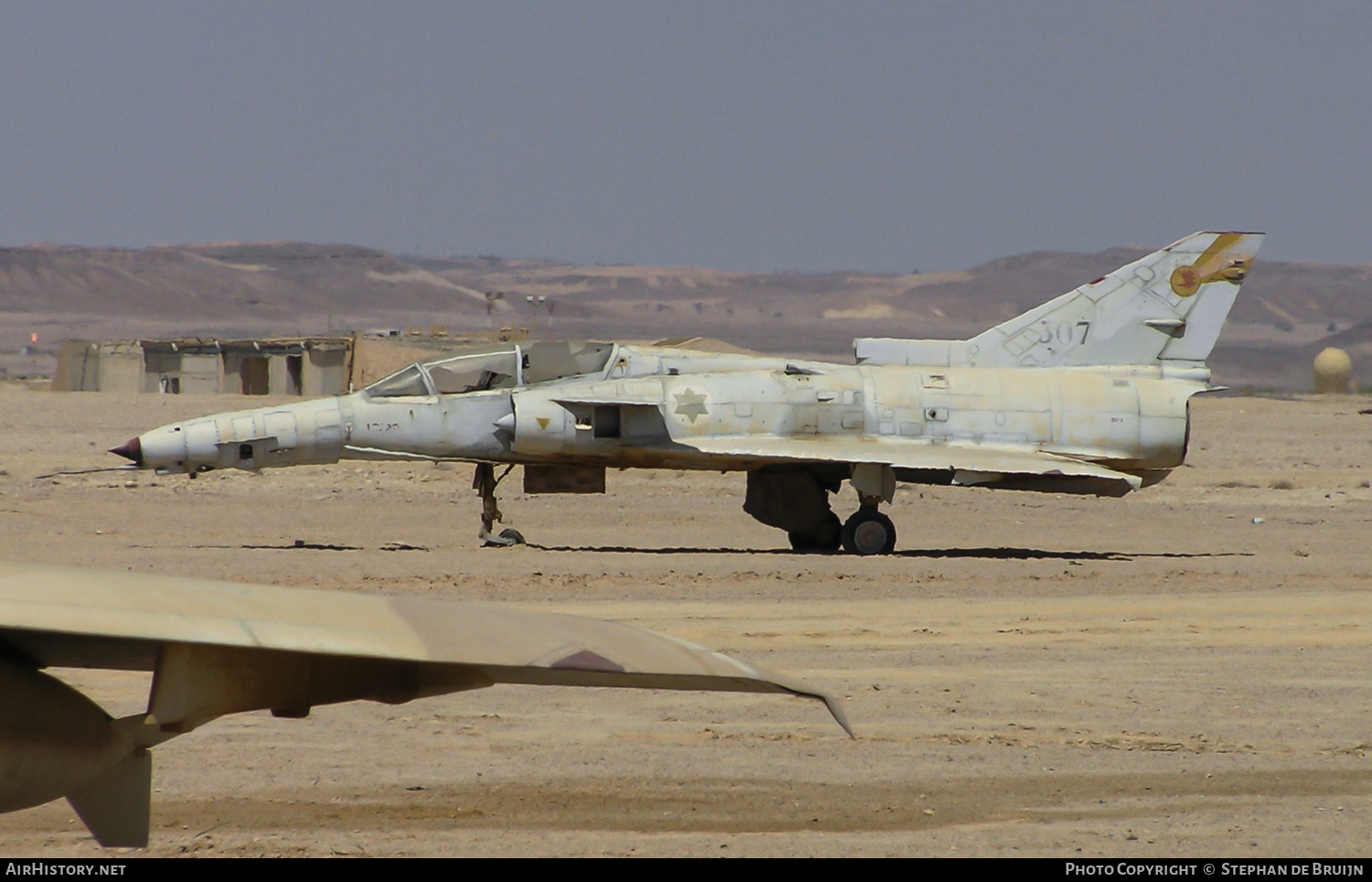
 www.airhistory.net
could have become this one :
www.airhistory.net
could have become this one :
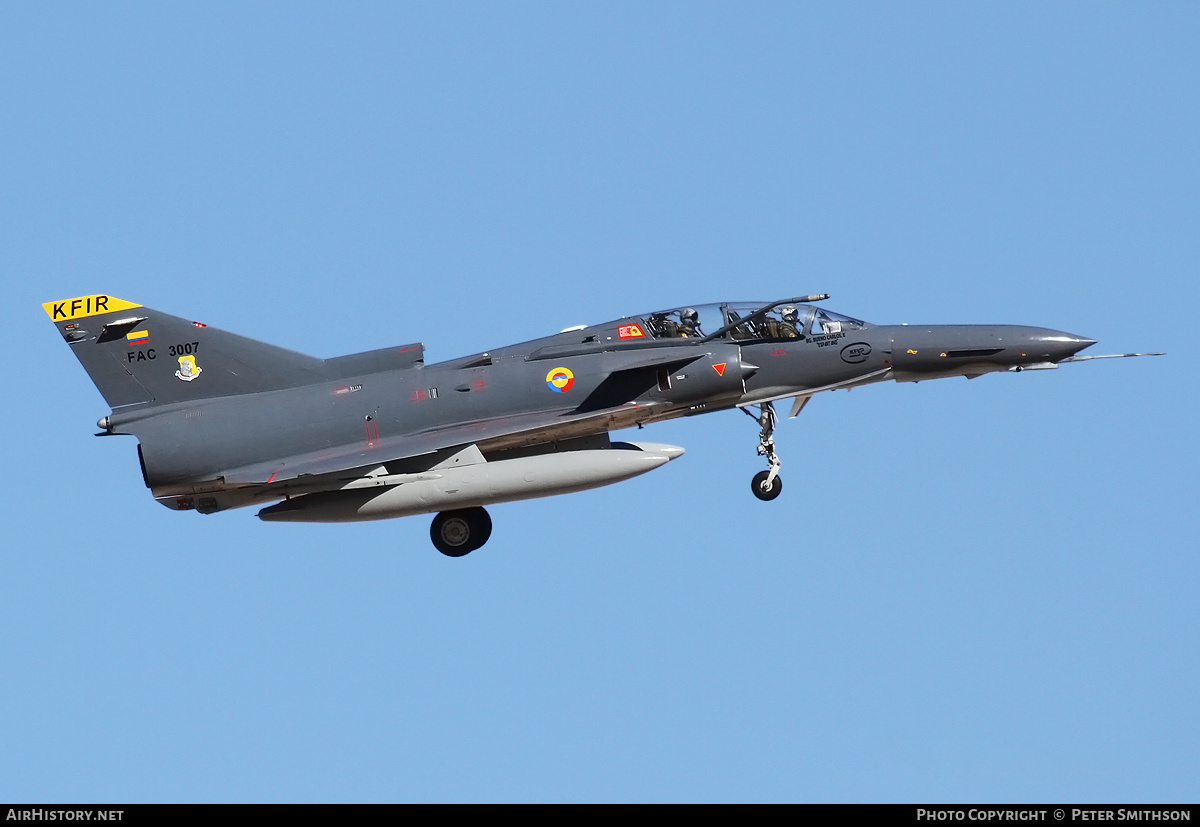
 www.airhistory.net
Anything is possible.
www.airhistory.net
Anything is possible.

Aircraft Photo of 307 | Israel Aircraft Industries Kfir TC2 | Israel - Air Force | AirHistory.net #542587
Aircraft photo of 307 - Israel Aircraft Industries Kfir TC2 - Israel - Air Force (144 Sqn), taken by Stephan de Bruijn at Ovda (LLOV / VDA) in Israel on 21 September 2006. Ovda has a huge storage / dump site on the south western part of the airfield. Through the years hundreds of withdrawn from...

Aircraft Photo of FAC3007 | Israel Aircraft Industries Kfir COD | Colombia - Air Force | AirHistory.net #338283
Aircraft photo of FAC3007 - Israel Aircraft Industries Kfir COD - Colombia - Air Force, taken by Peter Smithson at Las Vegas - Nellis AFB (KLSV / LSV) in Nevada, United States on 16 July 2012.
Deltafan
ACCESS: Top Secret
- Joined
- 8 May 2006
- Messages
- 1,569
- Reaction score
- 1,810
DWG
ACCESS: Top Secret
- Joined
- 11 February 2007
- Messages
- 1,754
- Reaction score
- 2,282
I've got a vague memory of coming across a GEC-Avionics Tornado document, possibly a proposal, that actually spelled it Inter-Dictor Strike - nothing to do with what I was doing so I just laughed at what I presumed was a mis-spelling and moved on.A bit of a Tornado sidetrack here. I'm working on Tornado recce stuff at the moment and while attending a strokey-beard meeting, began to ponder what the 'D' in IDS stood for. IDS is always described as 'Interdictor/Strike'. Is the 'D' just to give it a good ring? Or is it some German or Italian title?
Chris
I'd been temporarily banished to Flight Controls Division tech pubs at the time because I was on crutches, and they were on the ground floor while FCD software was on the first and management didn't have a clue what to do with me. Which would put it about '95, though I think the doc was significantly older, possibly pre-service entry, which makes me wonder if other people might have started off using the hyphenated version and sourced the initials from that.
- Joined
- 26 May 2011
- Messages
- 2,105
- Reaction score
- 2,675
...and another thing...its RAF role designator is 'GR' Ground attack Reconnaissance. It didn't do reconnaissance until it had lost its strike role around 1993, so should it not be 'GS.1'? ....and why no 'A' for attack...becoming GAR.1? So should the Tornado IDS have been designated GAS.1 pre-1993 and GAR.1/GAR.1A post-1993? Or am I havering?
Chris
Actually, been reading the new Morgan and Meeckoms book British Aircraft Specifications File 1950-1976. Got me thinking.
Chris
Actually, been reading the new Morgan and Meeckoms book British Aircraft Specifications File 1950-1976. Got me thinking.
- Joined
- 6 September 2006
- Messages
- 4,308
- Reaction score
- 7,441
It is odd as the term "interdiction" was not used that much in the RAF - although there were the B(I)6 and B(I) interdiction variants of the Canberra.
The only reconnaissance model was the Tornado GR.1A which entered service in 1988 with a fan of three IR/EO sensors replacing one of the cannon. It replaced a squadron of Jaguars with recon pods, and did have a secondary attack role like the Jags had. So GR seems to fit the 1A at least.
Strictly speaking if it was interdiction and strike then it should have been GS, or GRS at a push. Or even IRS? Maybe just a straight S.1 would have covered everything with the handful of 1As being SR.1A?
I've never thought the MoD system made much sense, or has been applied that sensibly since 1960 really.
The only reconnaissance model was the Tornado GR.1A which entered service in 1988 with a fan of three IR/EO sensors replacing one of the cannon. It replaced a squadron of Jaguars with recon pods, and did have a secondary attack role like the Jags had. So GR seems to fit the 1A at least.
Strictly speaking if it was interdiction and strike then it should have been GS, or GRS at a push. Or even IRS? Maybe just a straight S.1 would have covered everything with the handful of 1As being SR.1A?
I've never thought the MoD system made much sense, or has been applied that sensibly since 1960 really.
Kiltonge
Greetings Earthling
- Joined
- 24 January 2013
- Messages
- 449
- Reaction score
- 578
It is odd as the term "interdiction" was not used that much in the RAF - although there were the B(I)6 and B(I) interdiction variants of the Canberra.
Weren't those I-for-Intruder?
"Interdiction" as a term derives from NATO strategic concepts, it was only used sparingly prior to 1950.
As an aside, the earliest reference I can find to IDS in context of MRCA / Tornado is July 1971 when it was rendered as "RAF inter-diction / strike" as distinct from "German CAS".
Last edited:
- Joined
- 25 January 2020
- Messages
- 1,053
- Reaction score
- 1,462
I assume that they put the "I" in there to differentiate the intruder variants from the standard bomber variants. This made sense for the B.(I).6, as it was a derivative of the B.6, but made much less sense for the B.(I).8, as it was designed as an intruder from the ground up.It is odd as the term "interdiction" was not used that much in the RAF - although there were the B(I)6 and B(I) interdiction variants of the Canberra.
It doesn't seem that the usage of "GR" was common until the late 1960's, with the introduction of the Jaguar, Harrier and Phantom, as prior to that the Hunter and Kestrel were both designated as FGA.9 and GA.1 respectively. Prior to that, the designation "FB." was used on the Vampires, Venoms, Sea Hawks and a number of other aircraft.
I think that a simple "S." or potential "B." designation for the Tornado would have made more sense, although both seemed to fall out of favour in the 60's and 70's, with "S." seemingly retained for aircraft with a more maritime role (Sea Harrier and Buccaneer) and "B." being phased out with the last Vulcans, though this last sentence is complete speculation on my part.
Similar threads
-
-
-
-
Germany plans to develop new fighter jet to replace Tornado: Airbus NGWS
- Started by muttbutt
- Replies: 305
-

